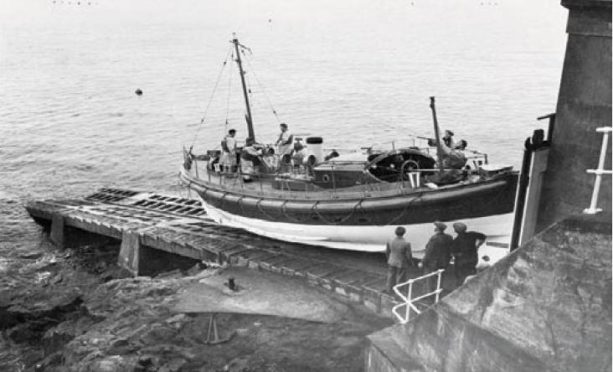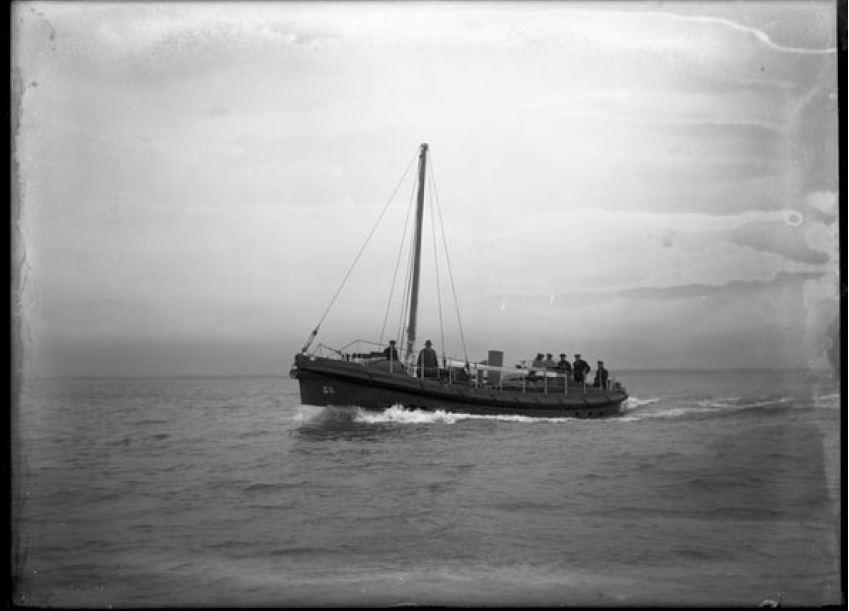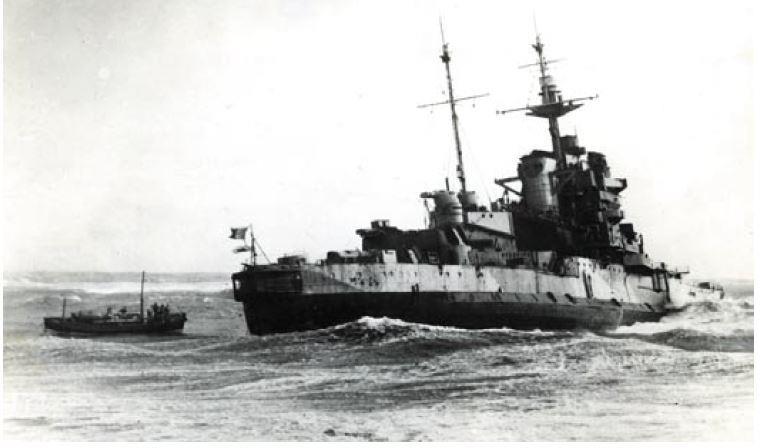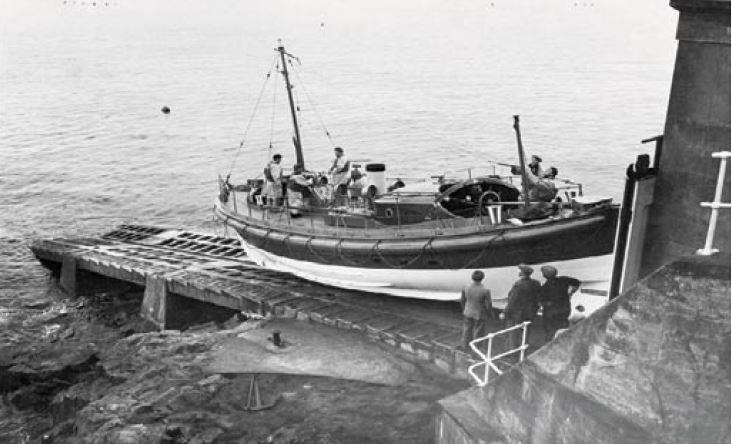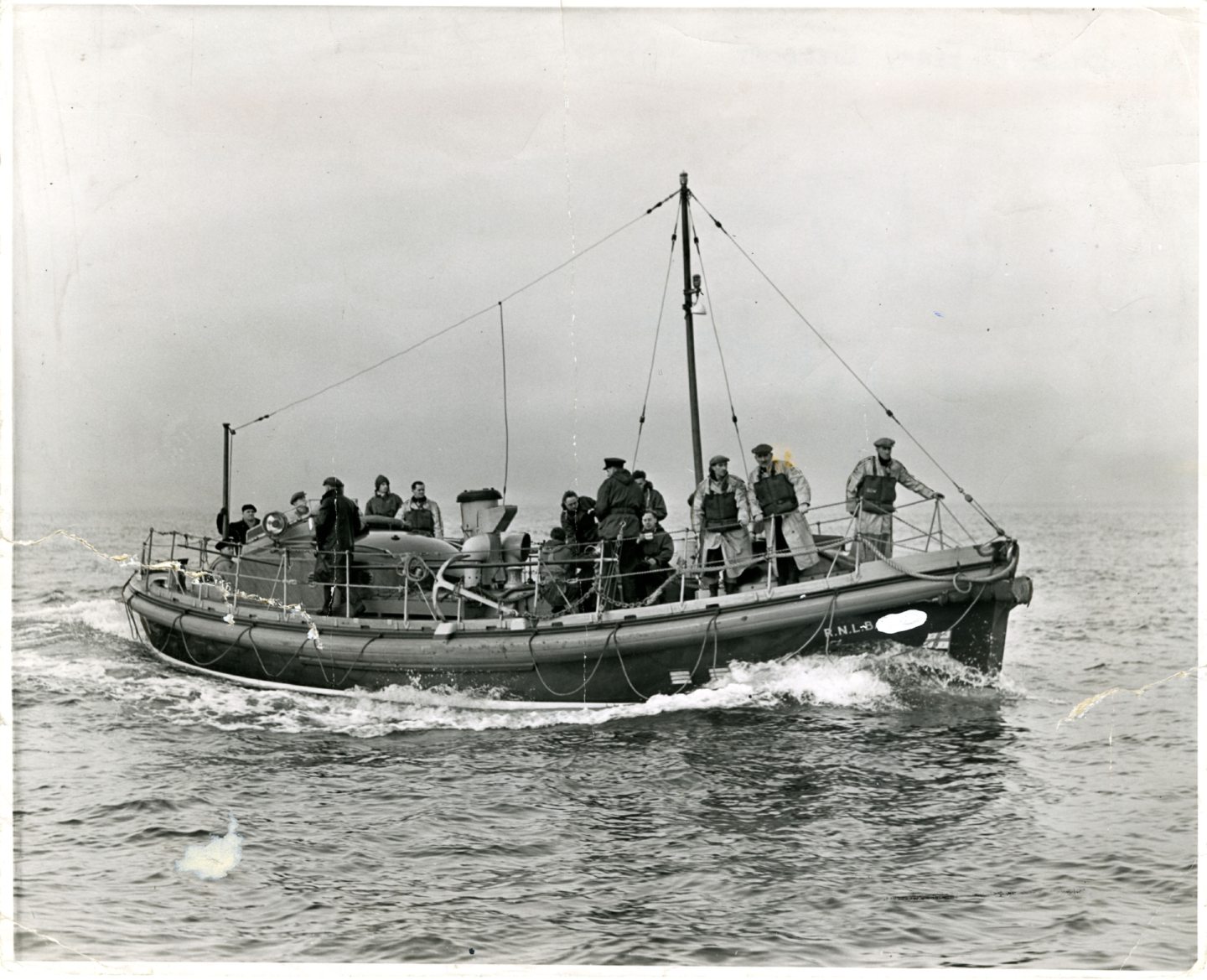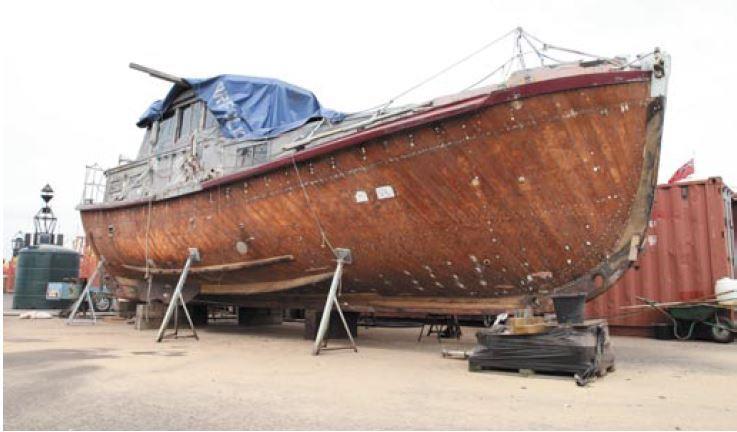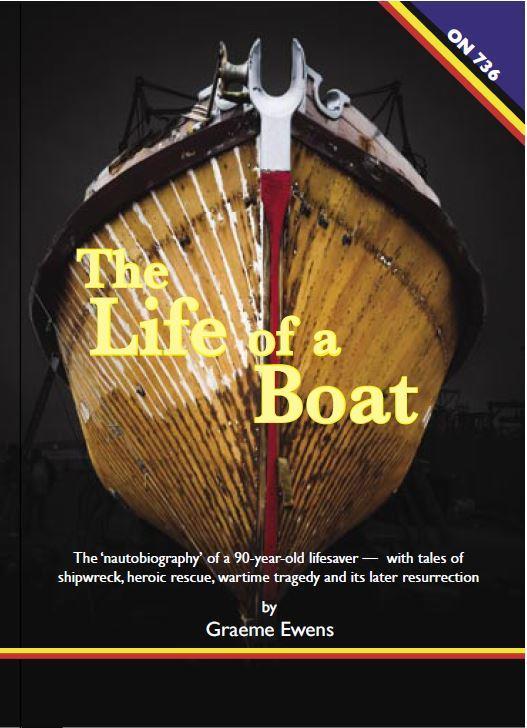More than 90 years ago the RNLI took ownership of its newest vessel, W&S, which would have a dramatic 40-year career and save the lives of six seaman on its last call out.
Now, maritime journalist Graeme Ewens is ensuring the life of the W&S is celebrated with the publication of the boat’s ‘nautobiography’ next month.
The book details every service conducted by the boat, identifying the casualty vessels and people involved with memories of crew members and survivors.
Despite W&S’s last rescue taking place off the coast of Monifieth at the end of a 10-year stint north of the border, the boat spent her first 30 years based at Penlee in Cornwall.
Measuring 45ft 6in, the Watson Cabin class boat was named after her benefactors, Winifred Coode and Captain Sydney Webb, when she was brought in to service in February 1931.
Her debut shout, in September, saw her sent on a recovery mission to bring back the body of Captain John Campbell, master of steamship Opal of Glasgow, which had sunk in heavy seas off Land’s End after her cargo of grain shifted.
Among its memorable call outs were several dramatic shipwrecks, including the heroic rescue of the crew from the battleship HMS Warspite, which ran aground in a gale in Mount’s Bay in 1947.
In storm force conditions Warspite dropped one of her anchors in Mount’s Bay but it did not hold and the storm drove her on to Mount Mopus Ledge near Cudden Point.
Later refloating herself, she went hard aground a few yards away in Prussia Cove with her skeleton crew of seven being saved by the W&S.
The 1947 rescue was just one of 100 call outs during the 29 years spent in Cornwall, before W&S was replaced by the doomed Solomon Browne.
In 1961 W&S travelled north to become part of the RNLI’s reserve fleet first serving at Buckie, then Aberdeen, Cromarty, Thurso and twice at Broughty Ferry.
It was during her last call out, on September 21, that W&S would take part in one of her most dramatic rescues.
Mr Ewens explains: “On September 21 at 7.05am, there were reports that distress flares had been seen and it was learnt that the 38ft yacht Sea Grim was in difficulties near Lady Bank in Monifieth Bay, four miles east of the station at Broughty Ferry.
“At 7.10 the Inshore Rescue Boat (IRB) was launched in a strong gale force south westerly wind, gusting up to 71mph, with a very rough sea.
“While on passage to the Sea Grim the IRB came up with the yacht Fun and Games, with three people on board, aground two miles east of the station. They were taken aboard the IRB and landed temporarily on a sandbank.
“A helicopter from RAF Leuchars, piloted by Flying Officer Paul Shaw, had also seen the flares while returning from another distress call, and he picked up the three men and landed them at Monifieth.
“The IRB then continued in search of the Sea Grim and found her out of control with eight people aboard.
“Five of her crew were taken aboard the IRB and landed on the shore, but the remaining three declined to be taken off the yacht, as they hoped to make land safely.
“While the IRB was engaged in this service the trimaran Nimble-Iki fired distress signals off Tentsmuir but when the helicopter approached the boat the crew ‘made two-fingered gestures’ to indicate they did not require assistance.
The mahogany hull was approaching 90 years old and had been left ashore for seven or eight years but it remained in great condition and to run my hands over those planks was inspirational.”
Author Graeme Ewens
“The W&S, on temporary duty at the station, was launched at 7.51. She came up with the Nimble-Iki, which had by then got under way and did not require help.
“Following a report that the fishing vessel Viking was overdue, the lifeboat searched for her.
“She came up with that vessel with a crew of three, 200 yards east of the Horseshoe Buoy, and took her in tow to Tayport.
“Five minutes later W&S was called out again to the assistance of the Sea Grim. She took the remaining three people from the yacht and brought them ashore. By 12.45pm the W&S was back at her station.”
The station at Broughty Ferry had suffered its darkest moment in 1959 when the Mona was lost with all hands.
Lifeboat Mona was identical to the W&S and the official report stated that “this is the first disaster to any of this class. Crews have always spoken very highly of the sea keeping qualities of these boats”.
Following her last shout, W&S was retired and converted to a long-range cruiser in Ireland, voyaging to the Mediterranean before eventually returning to Cornwall.
After years of neglect it was rediscovered in a sad condition near Falmouth by retired sea captain Rod Shaw, who took the boat to Harwich to begin a prolonged labour of love that will hopefully see it brought back into use.
It is hoped the release of the new book will help fund the continued refurbishment of the vessel, which was vandalised in 2020.
Graeme added: “As a maritime journalist, I was inspired to write a book about this remarkable boat when it arrived in Harwich for its third rebuild in nine decades.
“I had been publishing a magazine, Harwich Ahoy!, for the local lifeboat station and the retiring lifeboat operations manager had acquired W&S, which he found in Cornwall, as a retirement project.
“Coincidently, I was relocating from Harwich to Cornwall around the time the boat was making the reverse journey and I was able to document its arrival and early stages of preparation.
“The mahogany hull was approaching 90 years old and had been left ashore for seven or eight years but it remained in great condition and to run my hands over those planks was inspirational.
“The amount of documentation provided by the Penlee station’s press officer, Elaine Trethowan, was formidable and we were able to document every single service the boat performed.
“Station records were augmented with press reports and the personal backgrounds and accounts of crew members and survivors, particularly the memories of the mechanic who worked on the boat every day for 29 years.
“This is social history, maritime history, lifeboat history, littoral history.”
- The book will be a limited edition print with just 1,000 copies available and proceeds will be shared between the boat’s restoration and the Penlee station. It can be ordered from the publisher at lifeofaboaton736@gmail.com and from bookshops from September 7.
